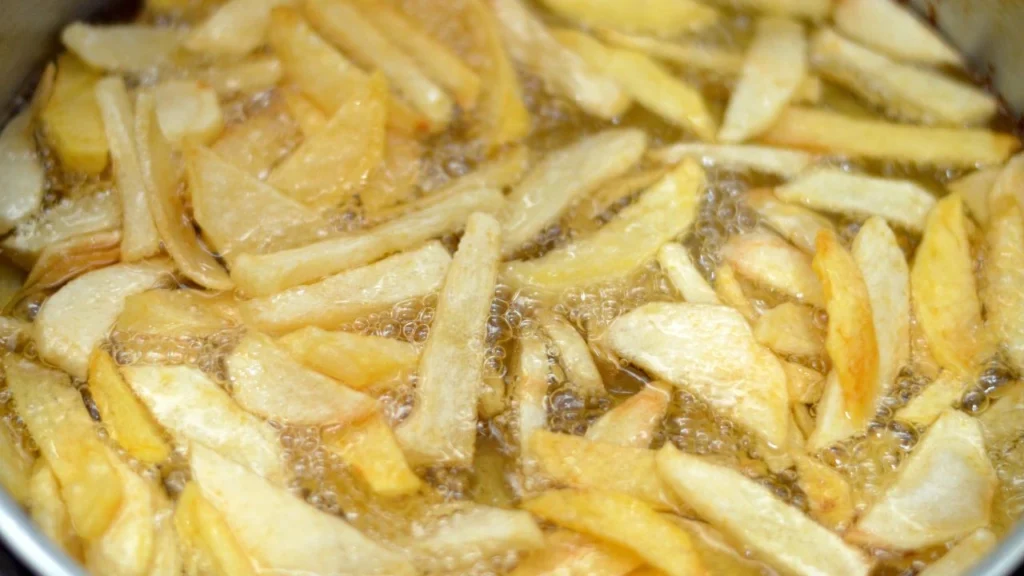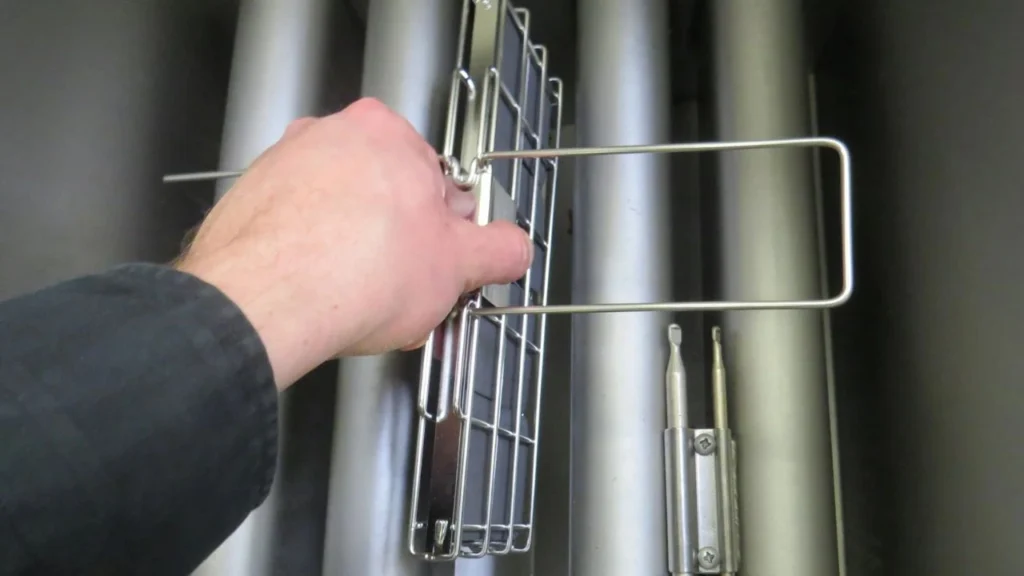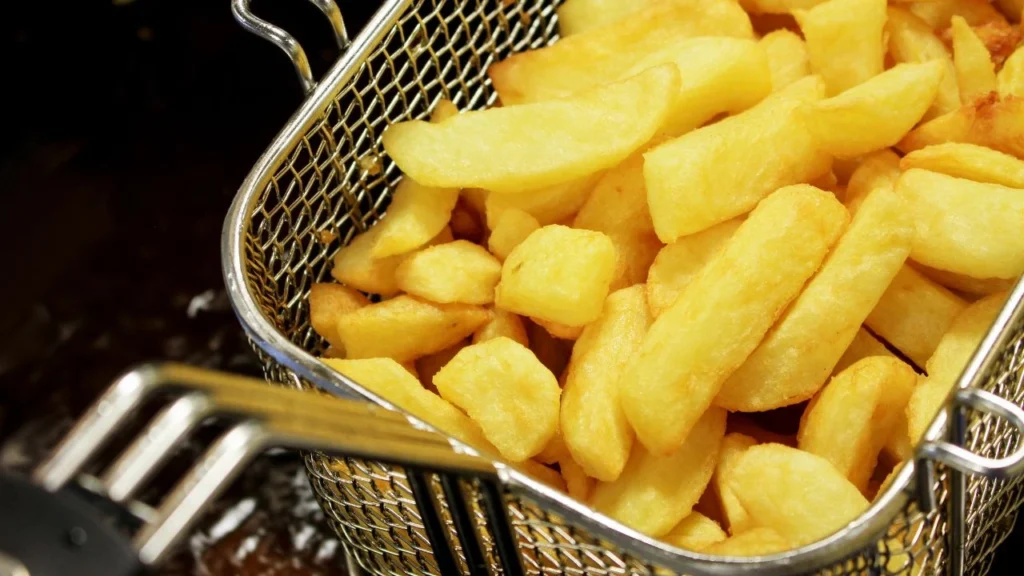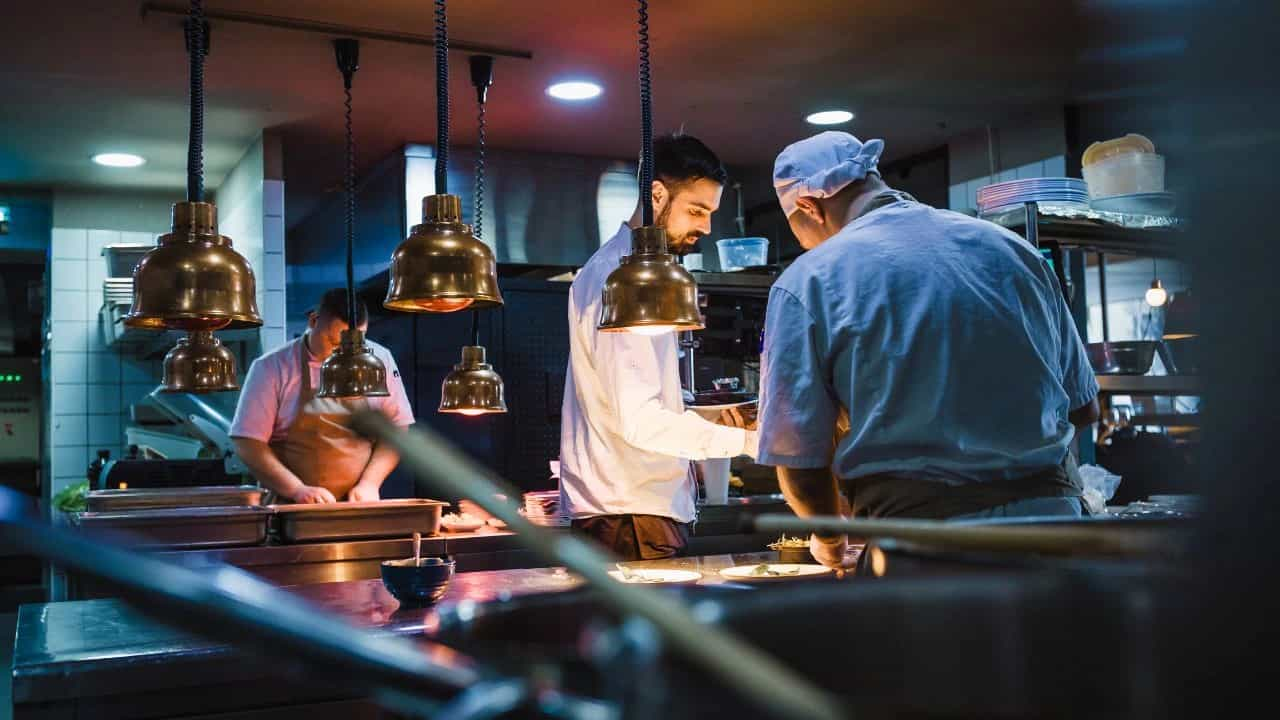Running a high-volume kitchen demands efficiency and cost-effectiveness. As a chef, I know the challenges of juggling flavor preservation with the need to cut operating costs. That’s where Frylow transforms the game by extending frying oil life. By reducing fry-oil consumption by up to 50%, Frylow helps businesses slash expenses while maintaining the distinct flavors of their dishes. This innovation can be a powerful ally in our quest to deliver quality meals without breaking the bank.
The Science Behind Frylow Technology

Understanding Frylow technology can greatly enhance our kitchen operations. It extends cooking oil life and maintains the quality of fried foods, making it a valuable tool in busy food service operations.. Here’s how this is achieved.
How Frylow Works
Frylow operates as a photo-catalytic ceramic device, which may sound technical, but it essentially means it uses light to catalyze a chemical reaction that benefits the fry-oil. By introducing electrons, Frylow reduces the breakdown of oil molecules.
This slows the oxidation process, maintaining the quality of the cooking oil even after extensive use. With the fry-oil’s longevity increased, there’s a noticeable decline in rancidity and off-flavors. This is ideal for kitchens using both dark and light cooking oils.
Materials And Design Of Frylow
The Frylow device is crafted from advanced materials. Made with a unique blend of NSF-approved precious and semi-precious metals, this device uses a patented technology that ensures safe and effective use over time. The design’s emphasis on photo-catalytic properties makes it suitable for all commercial fryers.
Also, it features a 5-year warranty, offering peace of mind regarding its durability and reliability. The design considers practical aspects, focusing on ease of installation and seamless integration into existing equipment.
Impact On Cooking Oil Stability
Using Frylow significantly alters the viscosity and stability of cooking oil. By reducing the viscosity, this device enhances the heat conduction properties, allowing frying at lower temperatures without sacrificing food quality. This means the frying oil life extension can be attributed to reduced thermal stress. As a result, cooking oil’s stability is greatly improved, which significantly affects restaurant frying oil usage.
The FL-15 Frylow model is particularly effective in extending oil life. This translates into financial savings, with less frequent fry-oil changes needed, directly impacting the bottom line by reducing costs and improving food quality consistently.
Advantages Of Utilizing Frylow In High-Volume Kitchens

Implementing Frylow technology in high-traffic establishments can revolutionize operations. I’ve noticed significant cost savings, improved food quality, and remarkable environmental benefits. These advantages are crucial for a bustling kitchen that aims to optimize efficiency and reduce overhead.
Cost Savings And Efficiency
Using Frylow extends the lifespan of cooking oil, which translates directly into savings. Kitchens using Frylow can sometimes see their frying oil life double or even triple its usual duration. This reduces the frequency of oil changes, ultimately lowering the cost associated with frequent fry-oil purchases and disposal.
Efficient oil usage also contributes to lower utility costs because Frylow enables cooking at lower temperatures, cutting down on energy consumption. The cumulative effect of these savings results in an enhanced return on investment, making Frylow a valuable addition to optimizing a budget.
Enhanced Food Quality And Consistency
Frylow contributes significantly to the production of crispier and lighter fried foods by reducing the absorption of fry- oil. This results in higher product quality and more consistent fried dishes, which is essential for maintaining customer satisfaction. Fried foods cooked with Frylow exhibit a less greasy texture, which appeals to quality-conscious patrons.
The consistency offered by Frylow ensures that each batch of food maintains the same high standard, crucial for busy kitchens serving a large number of diners. This consistency supports streamlined operations by minimizing food waste due to quality issues, further benefiting cost efficiency.
Environmental Benefits
The environmental impact of restaurants is a growing concern, and Frylow addresses this by lowering the carbon footprint associated with frying. Extending the life of frying oil results in reduced waste and less frequent disposal, alleviating the ecological impact.
Cooking at reduced temperatures not only saves energy but also decreases smoke emissions, creating a healthier and more pleasant working environment for staff. These environmental benefits align with modern sustainability practices, providing a selling point to environmentally conscious customers and contributing to a positive brand image.
Implementation Of Frylow In High-Volume Kitchens

Integrating Frylow into demanding food service operations can drastically reduce frying oil consumption and improve operational efficiency. This involves a structured approach, emphasizing seamless integration into current kitchen workflows, comprehensive staff training, and regular upkeep of the devices.
Steps For Integration Into Kitchen Operations
To start, I assess the current frying setup, noting the types and capacities of fryers being used. Frylow units are available for different capacities, making them ideal for both small fryers and large commercial operations.
I recommend beginning the implementation during a low-traffic period. This gives the staff time to adapt without pressure. Deploy Frylow units in fryers, ensuring they fit securely and are compatible with the fryer sizes.
Typically, Frylow devices are installed directly in the oil vat. They should operate effectively without interrupting the normal cooking schedule. This step is crucial as it ensures a seamless transition to using Frylow.
Training Kitchen Staff On Frylow Usage
Training is essential for maximizing the benefits of Frylow. I organize sessions that demonstrate the function of the units and their impact on oil savings and food quality. Hands-on training with actual Frylow units helps to better illustrate their operation.
Staff should be instructed to monitor Frylow’s effects on fry-oil color, quality, and lifespan. This is important for understanding how well the device is functioning and for making any necessary cooking adjustments.
Proper handling and care techniques can extend the life of the Frylow units. I emphasize routine practices in maintaining the devices to avoid misuse or damage.
Maintenance And Care Of Frylow Units
Regular maintenance is key to ensuring the longevity and effectiveness of Frylow. The units require minimal maintenance, which is beneficial in a high-output environment. I outline a simple maintenance routine that involves periodic checks and gentle cleaning of the units.
Cleaning involves wiping the units with a damp cloth and avoiding abrasive materials. This simple care process ensures the devices remain effective without adding to the workload.
Thanks to their robust design, Frylow units withstand the high demands of mobile food services and commercial kitchens alike, maintaining their efficiency over time.
Comparative Analysis: Frylow Versus Other Fry-Oil Management Solutions

When evaluating Frylow against other fry-oil management solutions, several factors stand out. I focus on price and value, the system’s performance, and user satisfaction to provide a comprehensive view. These aspects are crucial for any high-volume environment aiming for efficient and cost-effective operations.
Price And Value Comparison
I find that Frylow offers a compelling price advantage due to its one-time cost and lack of recurring expenses. In contrast, many traditional oil filtration systems come with ongoing costs, including filter replacements and maintenance fees. This aspect can save substantial amounts over time, making Frylow an attractive financial option.
Additionally, Frylow’s ability to extend the life of frying oil by up to 50% has a direct impact on daily operations. This efficiency not only saves money but also reduces waste, which aligns with sustainable business practices. By incorporating a simple, versatile device like Frylow, restaurant owners can better manage their expenses and remain competitive.
Performance And Longevity
In terms of performance, Frylow is designed to enhance longevity, something other fry-oil-saving devices might not achieve as effectively. With Frylow installed, I noticed a significant reduction in the frequency of oil changes, sometimes stretching the interval from 2 days to 4 or 5 days in restaurants with high frying volumes.
This reduction directly contributes to improving food quality and overall efficiency. Other fry-oil management systems may require more frequent adjustments and attention, whereas Frylow integrates seamlessly, offering consistent results with minimal intervention.
From a long-term reliability perspective, Frylow shows resilience and durability, functioning smoothly in demanding conditions without significant wear or need for repair.
User Experiences And Satisfaction
Feedback from restaurant owners and chefs highlights widespread satisfaction with Frylow. Many note the simplicity of its deployment and appreciate not having to deal with complicated setups or technical maintenance. This ease of use frees staff to focus on culinary excellence rather than equipment management.
Users often commend the immediate impact on the quality of fried foods. Sweet potato fries, for example, cook more evenly and come out crispier, enhancing customer satisfaction. These testimonials underscore Frylow’s role in elevating food quality, highlighting why many industry professionals endorse it as their preferred fry-oil management solution.
Conclusion
After exploring Frylow’s impact, it’s evident how valuable this device can be in high-volume kitchens. From oil cost savings to improved food quality, Frylow offers significant benefits that can enhance restaurant operations.
Summary Of Frylow’s Impact On High-Volume Kitchens
Implementing Frylow has brought remarkable advantages to environments like mine. The most noteworthy benefit is the significant reduction in frying oil consumption. I observed that oil change frequency decreased from every other day to every 4 to 5 days, substantially cutting costs.
Frylow contributes to better food quality. Reducing oil absorption enhances the flavor of fried items, offering a healthier option without compromising taste. The ease of deployment and maintenance makes it a hassle-free addition. This technology doesn’t just promise savings; it delivers on it consistently, making it a smart investment for anyone looking to improve their efficiency.
FAQ
How often do restaurants change their fry-oil?
Most restaurants change their commercial fryer oil every 5–7 days, but it depends on how much they use it. Busy establishments might need to change it more often, while quieter places could stretch it longer. Regular checks are essential.
What is Frylow, and how does it work in high-volume kitchens?
Frylow is a device designed for high-volume kitchens to extend the lifespan of frying oil, reducing costs and maintaining food quality. It works by utilizing proprietary materials that alter the oil’s molecular structure, allowing food to cook at lower temperatures and reducing oil absorption. This enhances the crispiness and flavor of fried foods while supporting more sustainable kitchen operations.
Can Frylow help reduce oil costs in a high-volume kitchen setting?
Yes, Frylow can help reduce costs in a high-volume kitchen setting by extending the life of frying oil. By improving fry-oil efficiency and maintaining optimal frying conditions, Frylow reduces the frequency of oil changes, lowering overall consumption and costs.
How does using Frylow affect the taste and quality of fried foods?
Using Frylow in high-volume kitchens enhances the taste and quality of fried foods by reducing fry-oil absorption, resulting in a crispier texture and preserving the natural flavors of ingredients. It also helps extend the life, ensuring consistent frying performance and quality over time. Overall, Frylow contributes to fresher and more appetizing fried dishes.
What is the installation process for Frylow in a commercial kitchen?
The installation process for Frylow in a commercial kitchen involves placing the Frylow unit directly into the fryer basket or fry-oil compartment, ensuring it is fully submerged. This typically requires no modifications to existing equipment and can be completed quickly, allowing kitchen operations to continue with minimal disruption. For best results, follow the manufacturer’s guidelines and consult any provided support services if needed.








